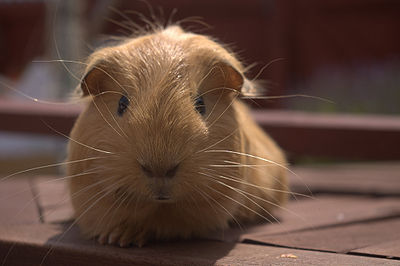
There are many misconceptions about guinea pigs which may prevent people from adopting them.
Myth: Male guinea pigs can’t live together.
Fact: Male guinea pigs can get along just fine as long as there isn’t a female in the cage as well.
Myth: Guinea pigs don’t need large cages.
Fact: Guinea pigs are often kept in cages which are too small, causing them to be inactive. A pair of guinea pigs should have a cage at least 10.5 square feet (30″ x 50″).
Myth: Rabbits and guinea pigs can live together in one cage.
Fact: Rabbits may injure the guinea pig and hog its food, so this is not a good idea.
Myth: Males can’t be neutered and females can’t be spayed.
Fact: A veterinarian specializing in small animals can do both procedures. Spaying a female is a more invasive procedure and should only be done if necessary. A neutered male and a female who has not been spayed can live together harmoniously.
Myth: Pregnant women shouldn’t be around guinea pigs.
Fact: There is no problem at all with pregnant women coming into contact with guinea pigs.
Myth: Guinea pigs only live three years.
Fact: The average life span of a guinea pig is between four and eight years.
Myth: Two guinea pigs living together won’t bond with humans.
Fact: The level of interaction between guinea pigs and humans is dependent on how much attention the humans give to the animals.
Myth: Pairs must be from the same litter.
Fact: Although adopting siblings raises the chances that the guinea pigs will get along with each other, this is more a matter of personality than family ties.
Myth: Any two guinea pigs can be thrown into a cage together.
Fact: Introducing a new guinea pig to the cage should be done gradually so that the pigs can get to know each other.
Myth: Guinea pigs are happy to live alone.
Fact: Guinea pigs prefer to live in pairs and enjoy cuddling with each other. A guinea pig who loses a cage mate will grieve.



